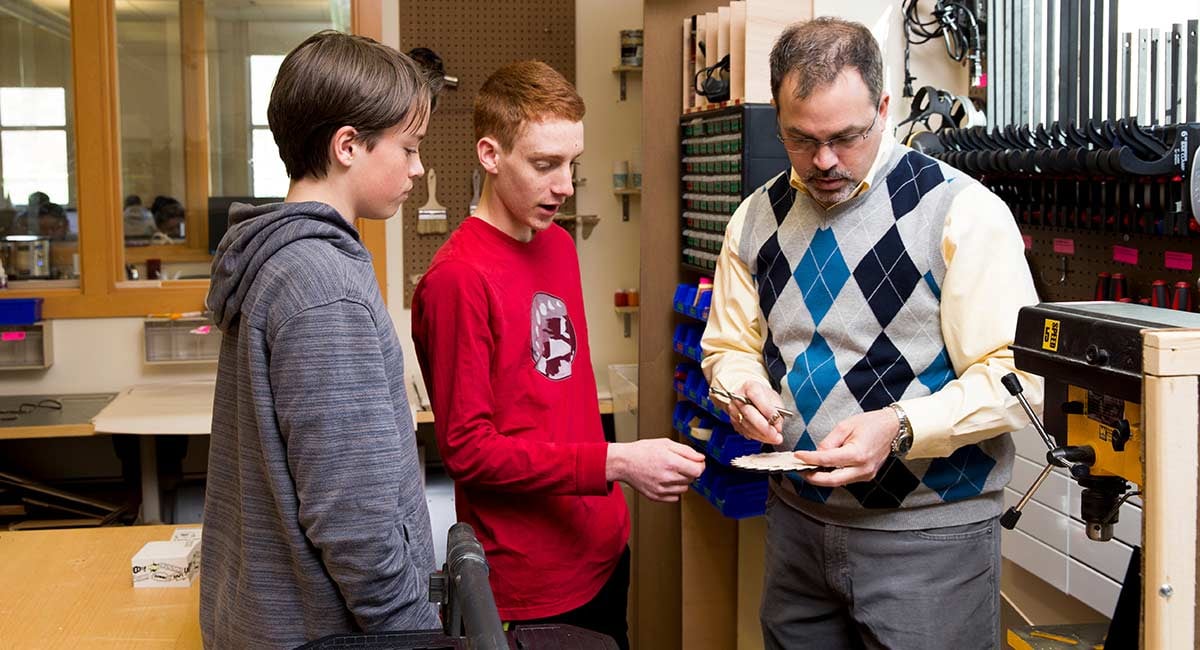
When a parent decides to enroll their child in a new school, it’s typically done for good reason. Whether you simply aren’t impressed with the quality of education your child is currently receiving, there are social issues impacting your child, or an outside factor like moving to a new town is influencing the decision, you know that a new school brings with it a slew of new opportunities for your child.
But it’s easy to understand why children themselves are not always excited about the switch. For children, transitioning to a new school brings with it all of the questions and concerns that an adult might face when deciding to move to a new company or start a new job. What if they don’t like me? What if I don’t fit in?
Explore what it is like to be a member of the Friends' Central Middle School community.
here’s good news: By keeping in mind some of the tips below, parents can make the transition a lot easier on their child, themselves, and their entire family.
1. Involve your child in the school selection process.
If you have not yet made a selection on which school your child will be attending, involving them in the process can be a great way to make them feel as though they have at least some say in the decision (even though you, ,of course, have final say).
Ask your child what they would most like to get out of a new school. What programs interest them? What academics or sports or extracurricular activities get them excited? Listen to their thoughts, and do your best to find any information that you can to inform them about the new opportunities that await them. This can be especially helpful when you are actively visiting schools with your child.
This will help your child feel a sense of agency about the process that will allow them to feel invested in their education, which is a great thing to foster, and can also help you build up some excitement about the switch. If you can get your child excited about their new school and the opportunities that it brings, then you’ve already won the battle.
2. Help your child prep for a school visit or admissions interview.
Many private and independent schools require an admissions interview as a part of the application process, which can be an admittedly nerve-wracking experience for students without much practice with interviews. Even for schools that don’t require an interview, there will often be a school visit to help you evaluate the school.
Helping your child prepare for these exercises can go far in assuaging any concerns they may have. Largely, this will entail simply calming their nerves about what they can expect and how they should respond to tough questions.
3. Answer their questions and listen to their concerns.
Life if busy: Between work, family responsibilities, and everything in between, parents often find themselves rushing from task to task with little time to think in between. And this can make it easy to brush off questions that your child may have about certain things—for example, the decision to switch their schools.
But it’s incredibly important for parents to both acknowledge any concerns that their children have, as well as answer any questions that they are able to. Uncertainty breeds worry, so if parents can quash uncertainty by providing an answer up front, it can go far in making the transition easier.
4. Keep life as “normal” as possible during the transition.
Switching schools can be an overwhelming process for your child. In addition to the challenge of a new academic curriculum, they’ve got to navigate the tricky social world of making new friends. For that reason, it’s best to avoid overwhelming your child by changing to much too fast. Whenever possible, keeping things “normal” outside of school can help your child more readily adapt to their new school.
This means keeping family life and schedules as steady as possible during the transition as your child settles into a new routine. Though not always a possibility (for example, when moving to a new town), when it is possible, this predictability can have tremendous positive impacts for your child.
5. Time the move to coincide with the start of a new school year.
Admittedly, it is not always possible to sync switching to a new school with the start of the new academic year. Sometimes, such as when moving from one location to another, or when larger social or academic issues are at play, an immediate move is required, and that is understandable.
That being said, when possible, timing your child’s move to a new school so that it falls at the beginning of a school year instead of during the school year can go far in ensuring a smooth transition, for a number of reasons.
For starters, it is often easier for a child to make new friends at the start of the year, when everyone is in flux and friendships/group dynamics are not already cemented. This can also remove some of the “new kid” focus that might make your child uncomfortable.
And, of course, there are the academic issues to consider: Joining a new school halfway through the year means being dropped into a course of study that may or may no match up to what your child had been learning at their previous school. This raises the possibility that, on top of all of the other stresses your child is experiencing, they may also struggle to catch up to the rest of the class. Avoiding this, if possible, would be beneficial.
Calming the Nerves
So much of the fear and stress that children experience when it comes time to switch to a new school spawns from uncertainty. By following the tips above, parents can remove some of this uncertainty and help make their child’s transition to a new school that much easier.



